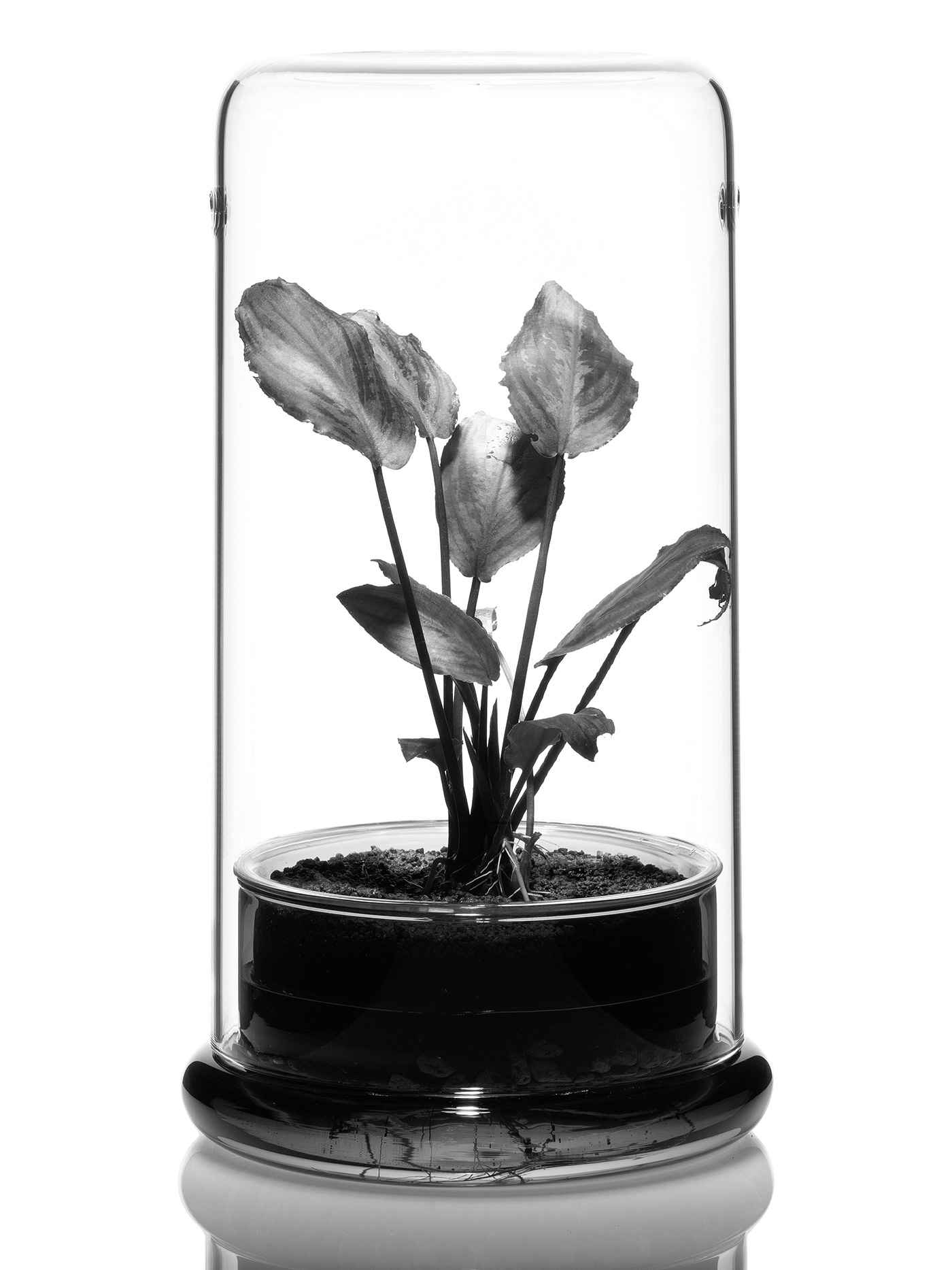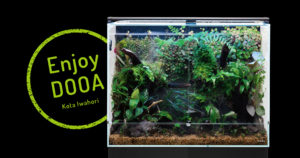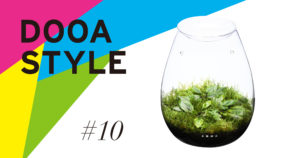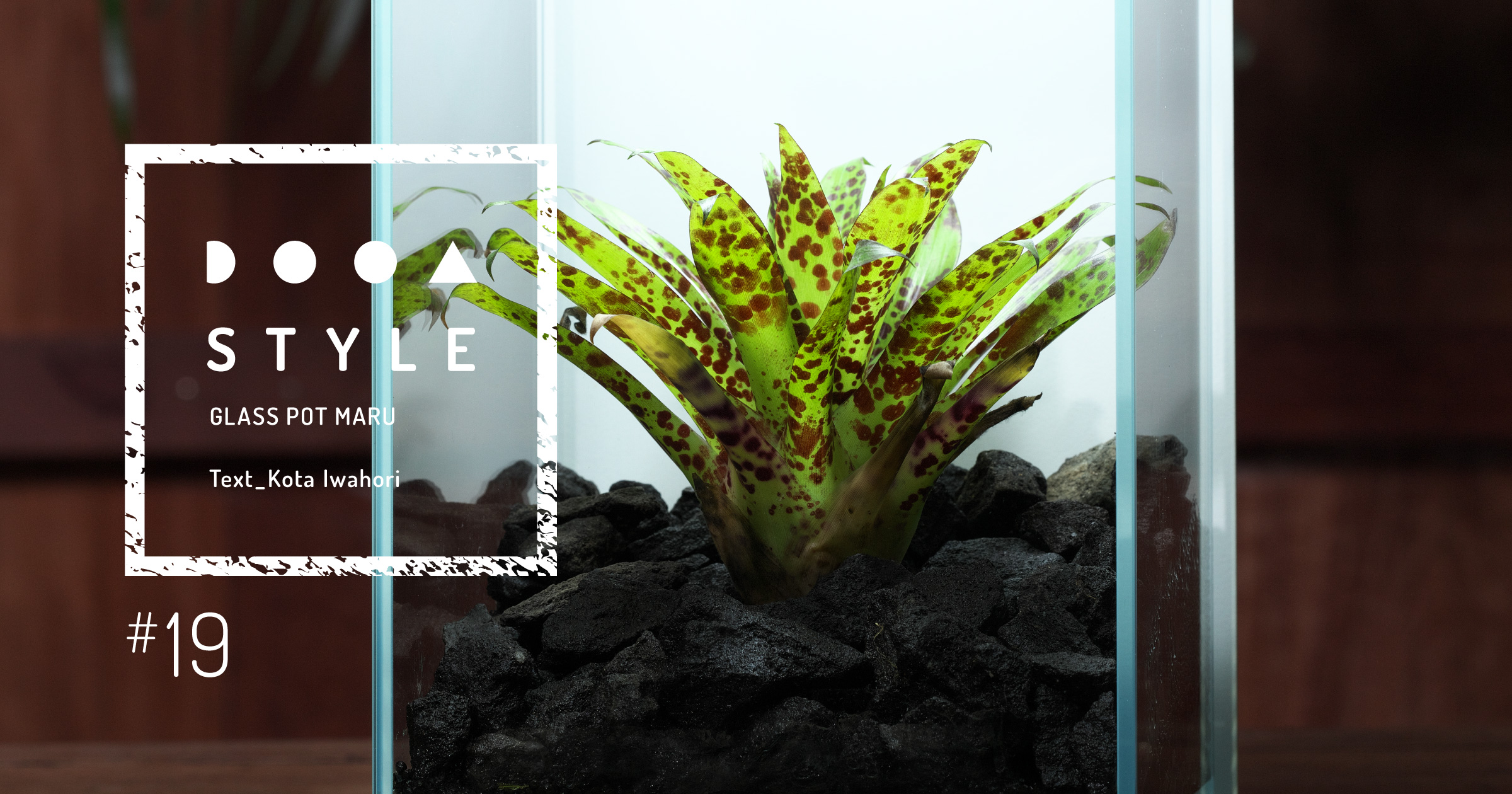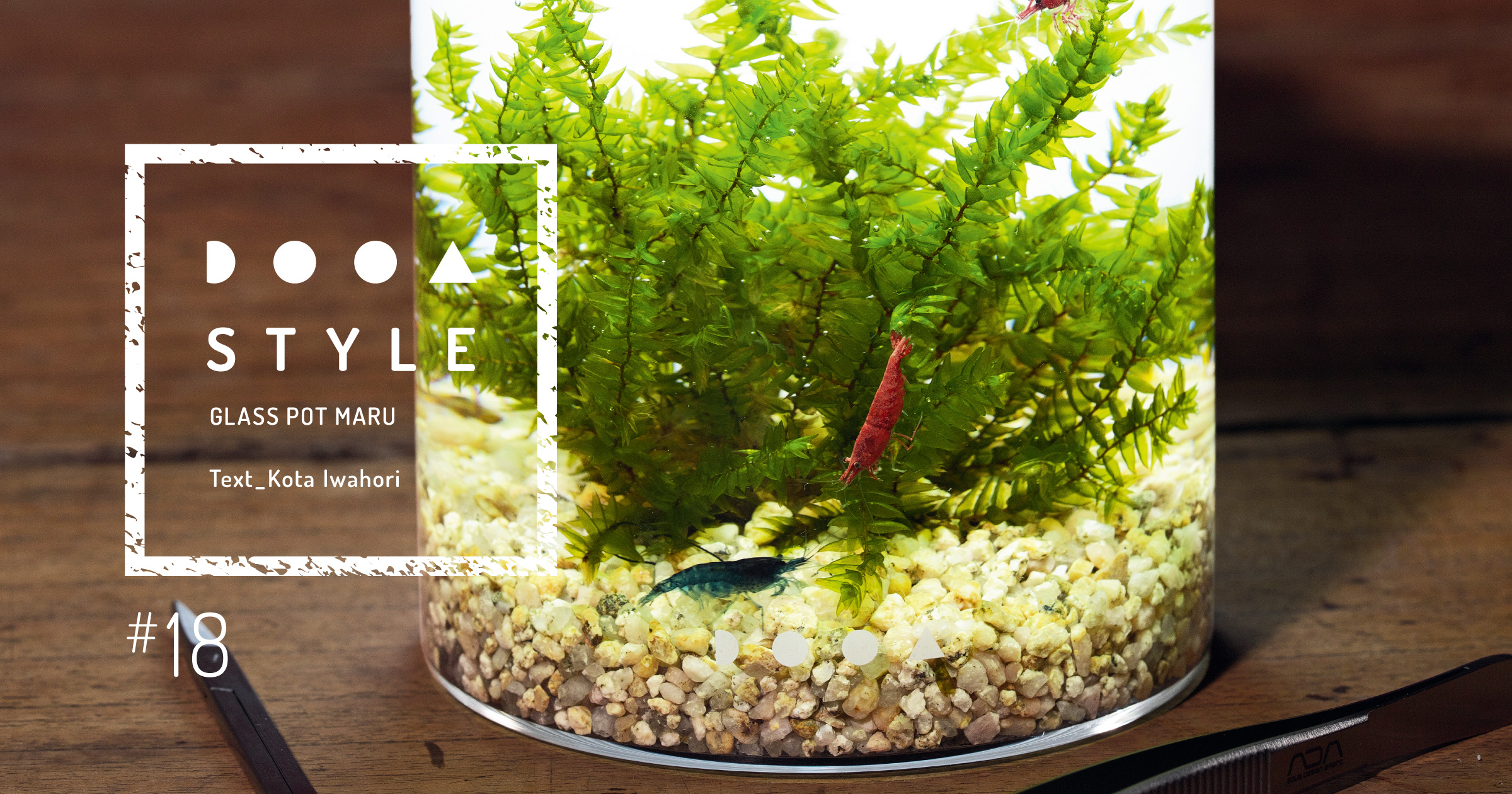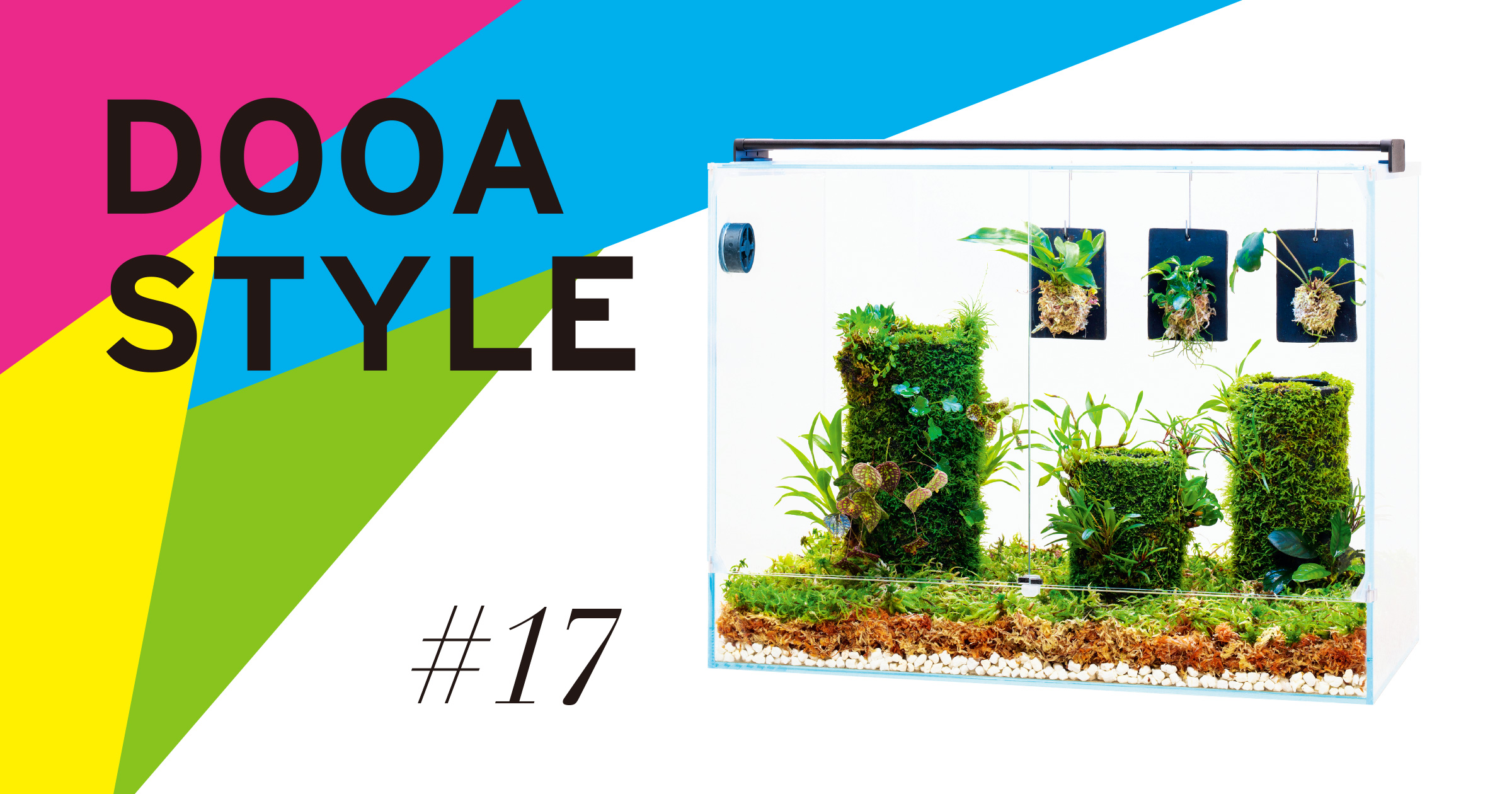2021.05.14
連載:Aqua Journal vol.307
Enjoy DOOA ‘Those who grow in seclusion’
Naturalness of primeval forests hidden in a quiet shadow expressed with various plants
I created this Paludarium layout as thinking of Cryptocoryne that grows quietly in and around streams in Southeast Asia. The species with round leaves or wide leaves with uneven texture often grow naturally on riverbeds and wetlands in rainforests. Although it is an environment with little daylight hours, Cryptocoryne adapts to the environment and makes an amazing cluster. Also, in such a gloomy habitat, there are many plants that unfold beautiful bluish leaves. I aimed to express the way Cryptocoryne grows quietly in the shadow of a quiet forest as if a scene is captured from nature.
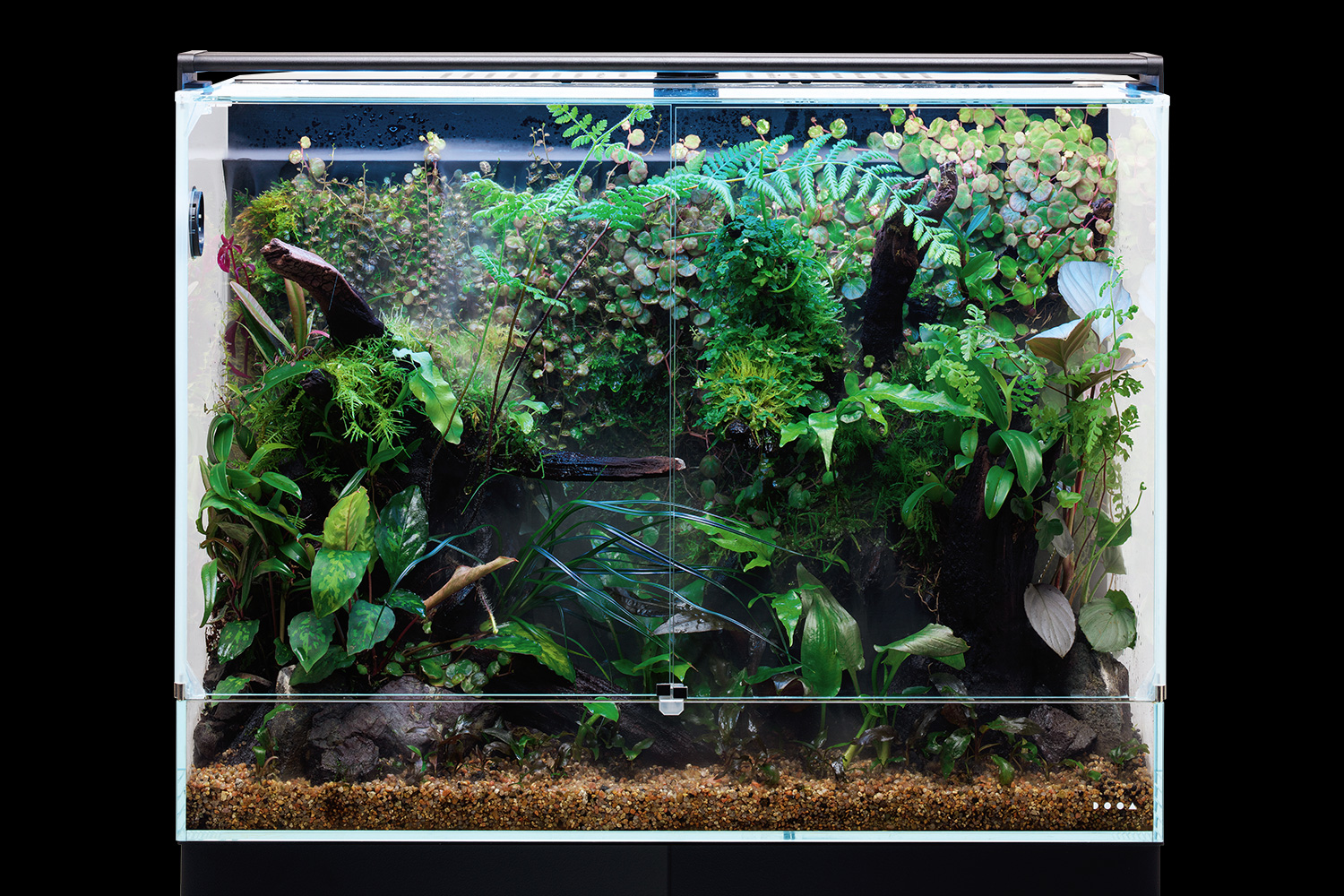
DATA
DOOA Paluda Light 60
DOOA System Paluda W60×D30×H45(cm)
DOOA Mistflow
DOOA Mistflow Cap
DOOA Circulation Fan 40
Metal Cabinet 60 (Black)
Power Cord S-70
Horn Wood, Manten Stone
DOOA Tropical River Sand
DOOA Jungle Base, Jungle Soil
DOOA Wabi-Kusa Mist
Plant
Cryptocoryne pontederiifolia
Cryptocoryne wendtii ‘Mioya’
Cryptocoryne sp. ‘Real green’
Medinilla sp.
Sonerila sp.
Ficus pumila var. quercifolia
Homalomena sp. ‘Silver Green’
Homalomena sp. ‘Silver Red’
Piptospatha cf. ridleyi
Mapania sp.
Colysis sp.
Hypnum plumaeforme Wilson, Entodon sp.
Wabi-Kusa Mat Taxiphyllum sp. ‘Peacock Moss’
Wabi-Kusa Mat Taxiphyllum sp. ‘Spiky Moss’
Wabi-Kusa Mat Solanum evolvulifolium
Wabi-Kusa Mat Begonia lichenora
Shooting date: December 24th, 2020 (ADA)
Creation: Kota Iwahori
ⒸAQUA DESIGN AMANO
DOOA Paluda Light 60
DOOA System Paluda W60×D30×H45(cm)
DOOA Mistflow
DOOA Mistflow Cap
DOOA Circulation Fan 40
Metal Cabinet 60 (Black)
Power Cord S-70
Horn Wood, Manten Stone
DOOA Tropical River Sand
DOOA Jungle Base, Jungle Soil
DOOA Wabi-Kusa Mist
Plant
Cryptocoryne pontederiifolia
Cryptocoryne wendtii ‘Mioya’
Cryptocoryne sp. ‘Real green’
Medinilla sp.
Sonerila sp.
Ficus pumila var. quercifolia
Homalomena sp. ‘Silver Green’
Homalomena sp. ‘Silver Red’
Piptospatha cf. ridleyi
Mapania sp.
Colysis sp.
Hypnum plumaeforme Wilson, Entodon sp.
Wabi-Kusa Mat Taxiphyllum sp. ‘Peacock Moss’
Wabi-Kusa Mat Taxiphyllum sp. ‘Spiky Moss’
Wabi-Kusa Mat Solanum evolvulifolium
Wabi-Kusa Mat Begonia lichenora
Shooting date: December 24th, 2020 (ADA)
Creation: Kota Iwahori
ⒸAQUA DESIGN AMANO
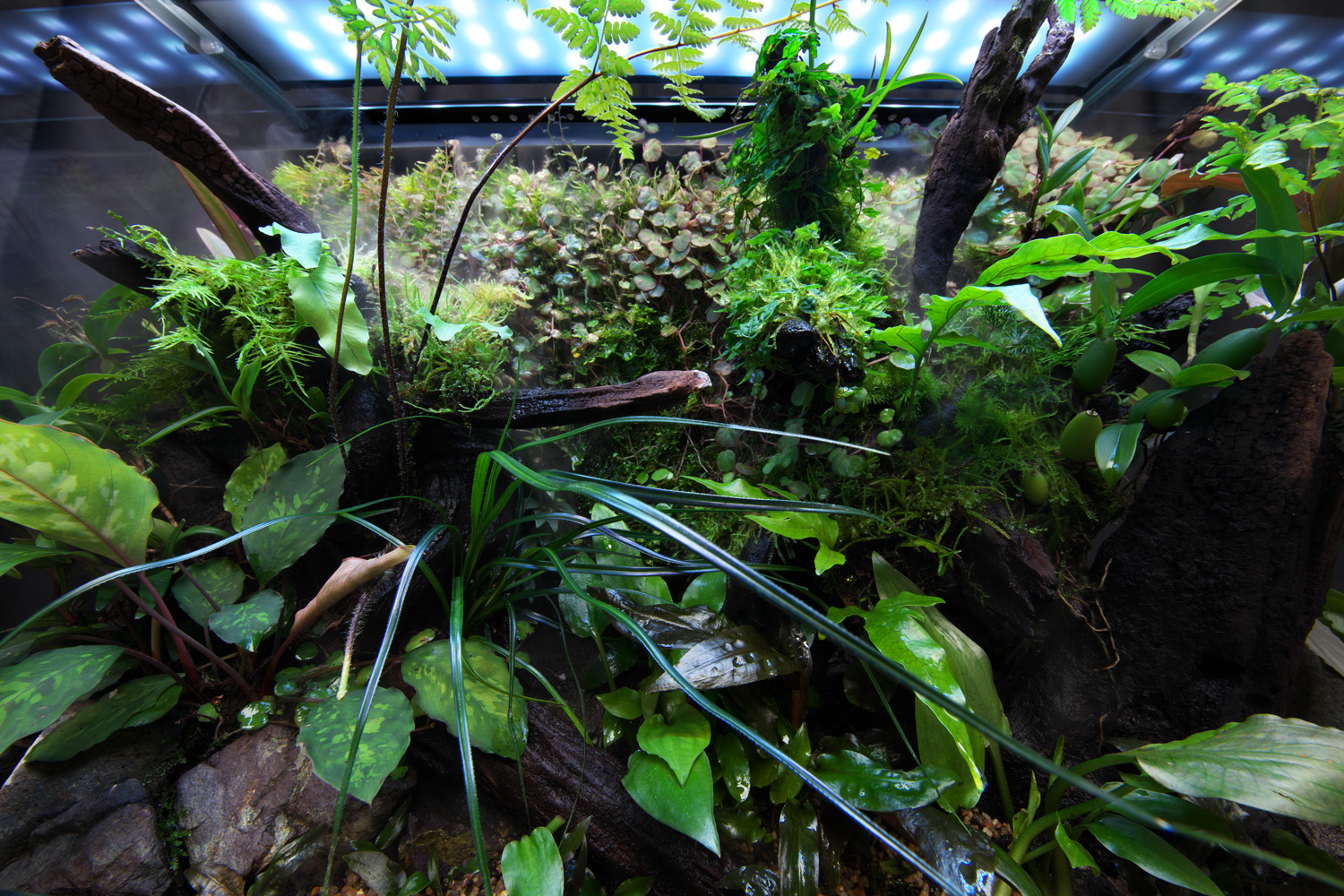
Arranging plants in a well-balanced manner considering their characteristics while being aware of shadows
My main focus in this Paludarium layout was to express the strength of plants growing on the dark forest floor. I created this layout with a complicated structure having a lot of shadowy parts by taking advantage of the shade resistance of Cryptocoryne, rather than having light evenly throughout. By arranging various plants in places with different light environment, I purposely aimed to express the lush vegetation. I expressed a relaxing and long flow of time by having slow growing plants lushly develop spectacular leaves.
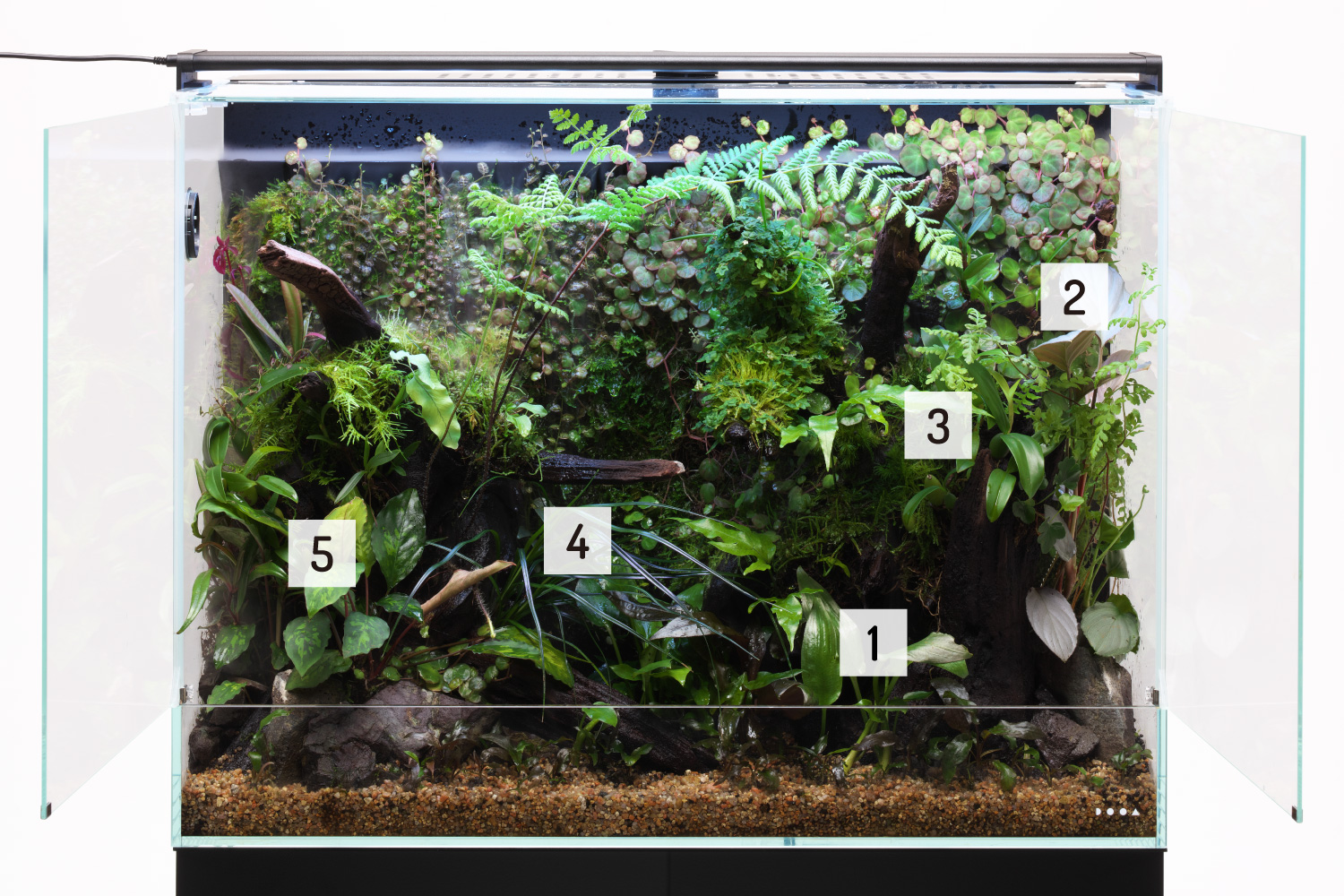
Giving shadows with an angled composition
The driftwood and stones are reminiscent of an intricate valley. Fast growing species are arranged at the bright top, and slow growing species are arranged at the dark bottom.
The driftwood and stones are reminiscent of an intricate valley. Fast growing species are arranged at the bright top, and slow growing species are arranged at the dark bottom.
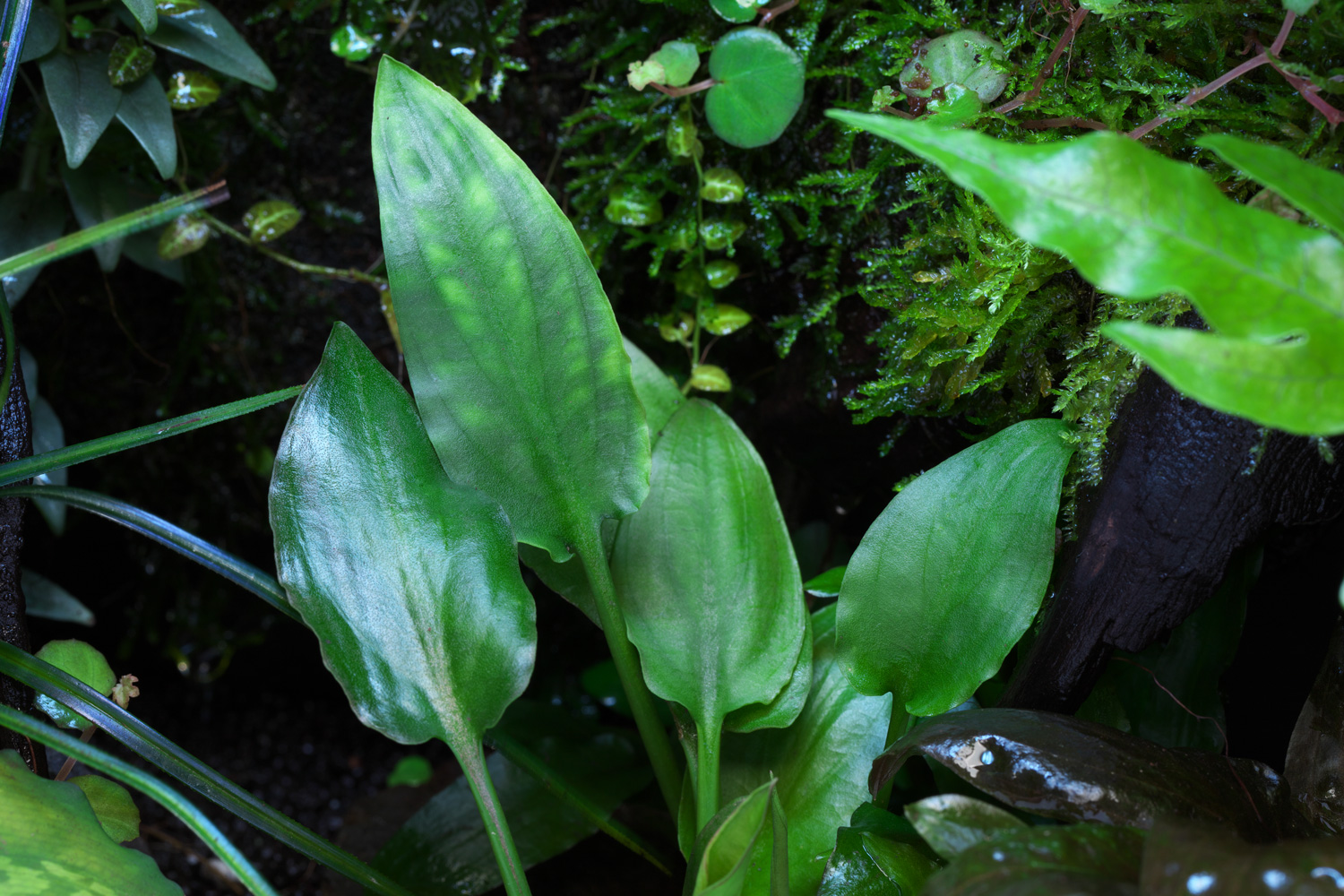
1. Cryptocoryne that shines even at the bottom section
Because of its high shade tolerance, it firmly unfolds leaves even in such an environment. It shows the fascinating beauty that the only emersed leaves have.
Because of its high shade tolerance, it firmly unfolds leaves even in such an environment. It shows the fascinating beauty that the only emersed leaves have.
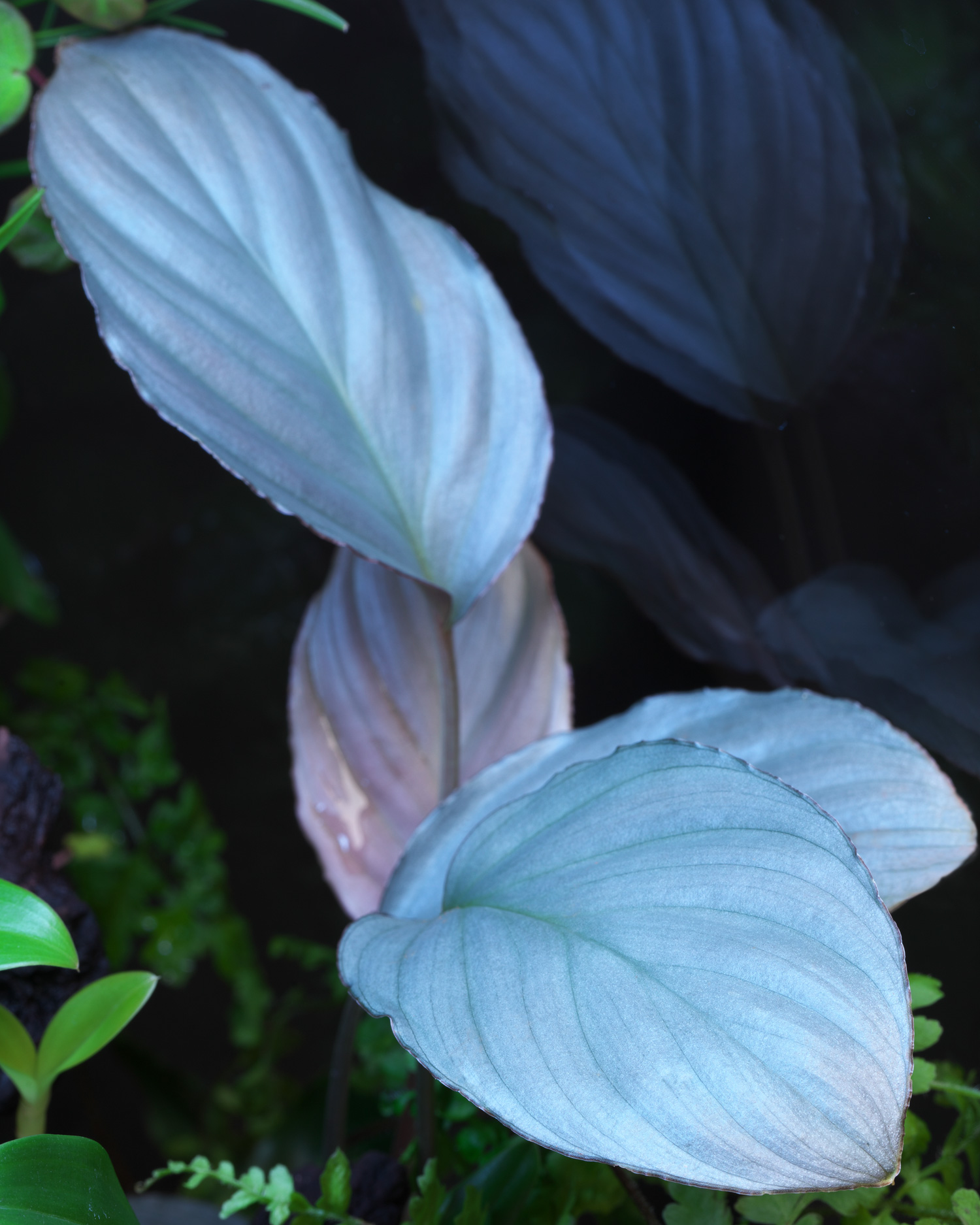
2. Homalomena sp. ‘Silver Red’
Growing a plant that glows in blue is one of the best parts of Paludarium. Just wondering if this species glows in its habitat where the environment is wet and quiet.
Growing a plant that glows in blue is one of the best parts of Paludarium. Just wondering if this species glows in its habitat where the environment is wet and quiet.
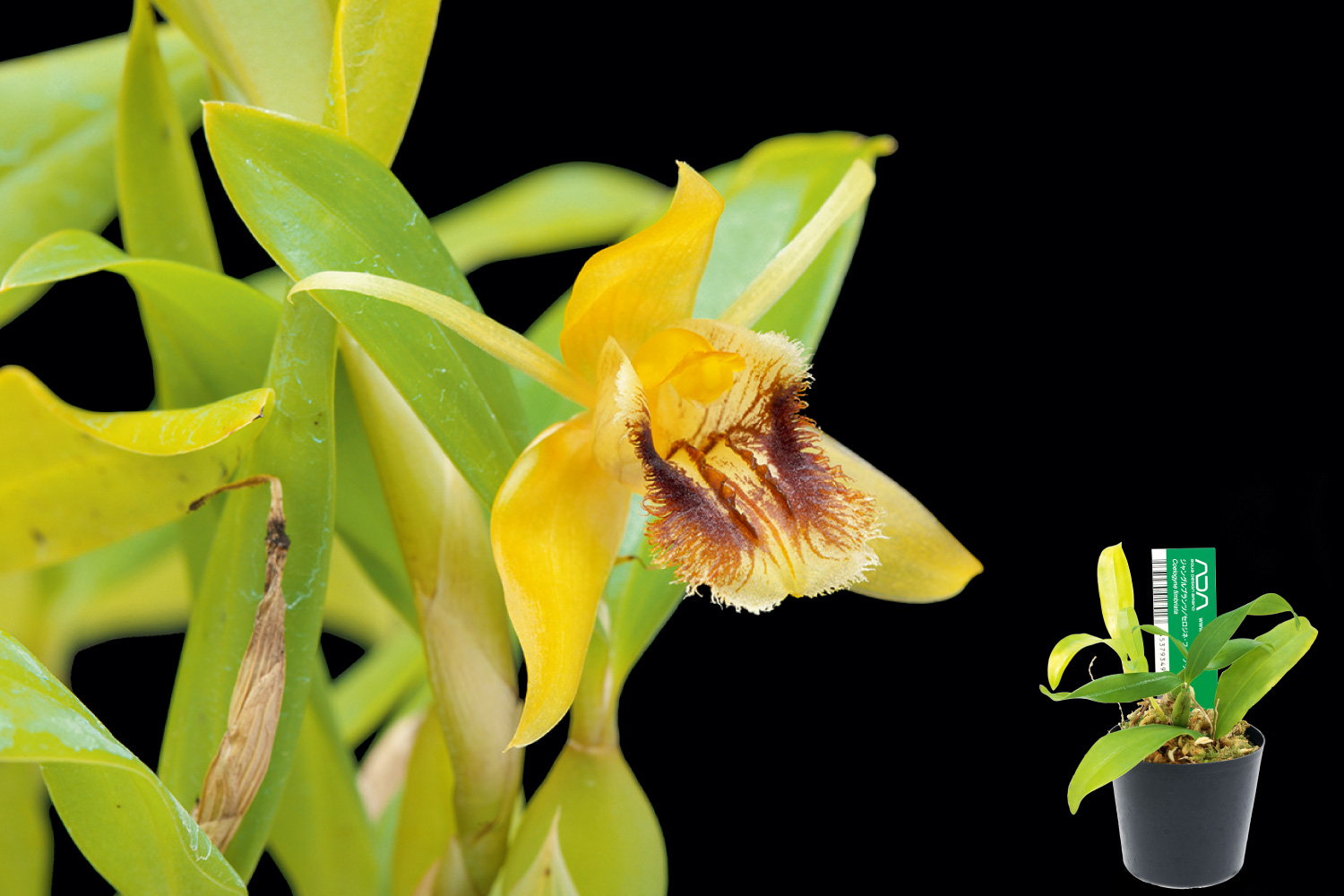
3. Coelogyne fimbriata
It is an epiphytic orchid with yellow petals that is resistant to humidity changes. When the conditions are met, it blooms multiple times a year.
It is an epiphytic orchid with yellow petals that is resistant to humidity changes. When the conditions are met, it blooms multiple times a year.
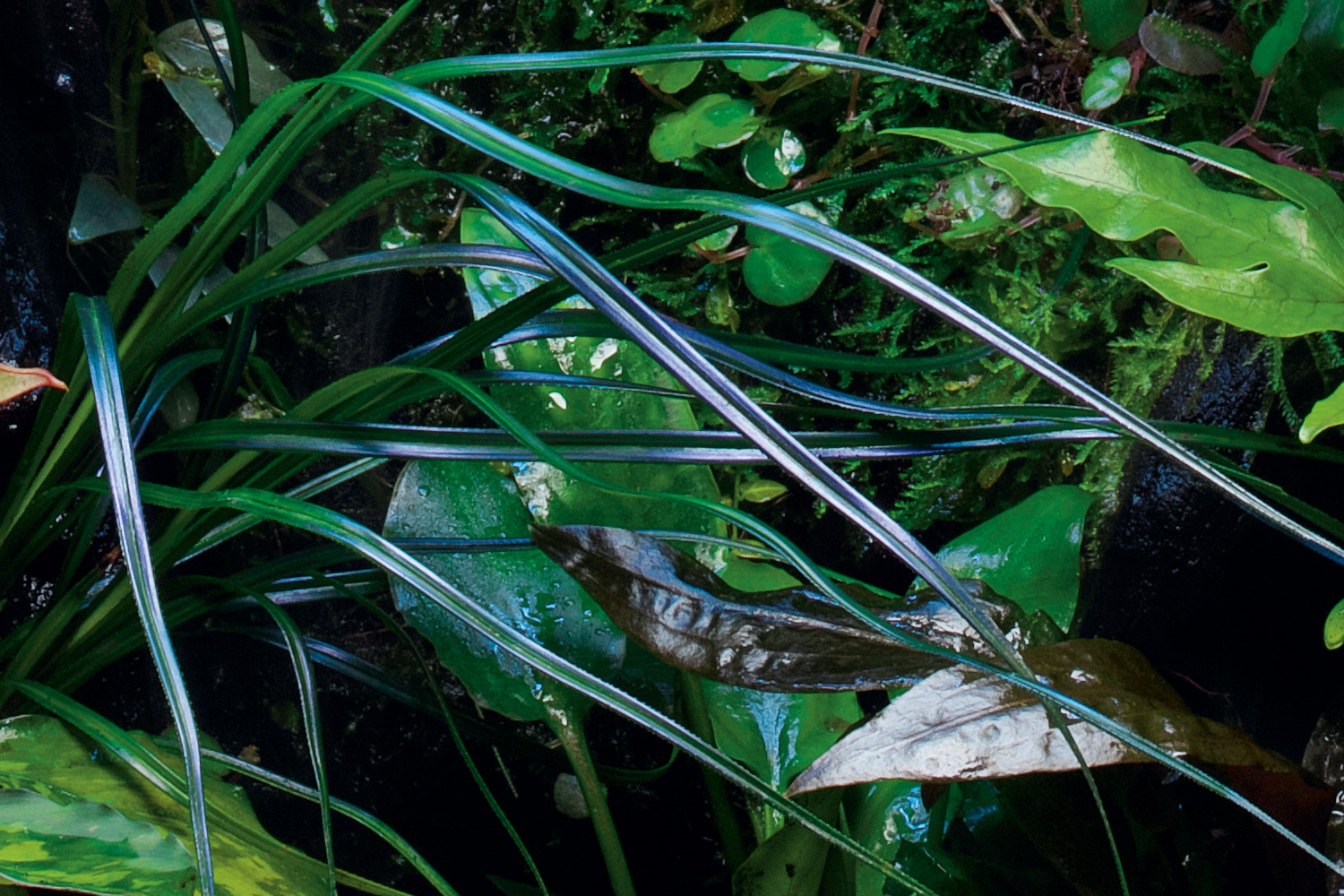
4. Mapania sp.
Paluda Light developed for tropical rainforest plants, can bring out the true beauty of plants even more.
Paluda Light developed for tropical rainforest plants, can bring out the true beauty of plants even more.
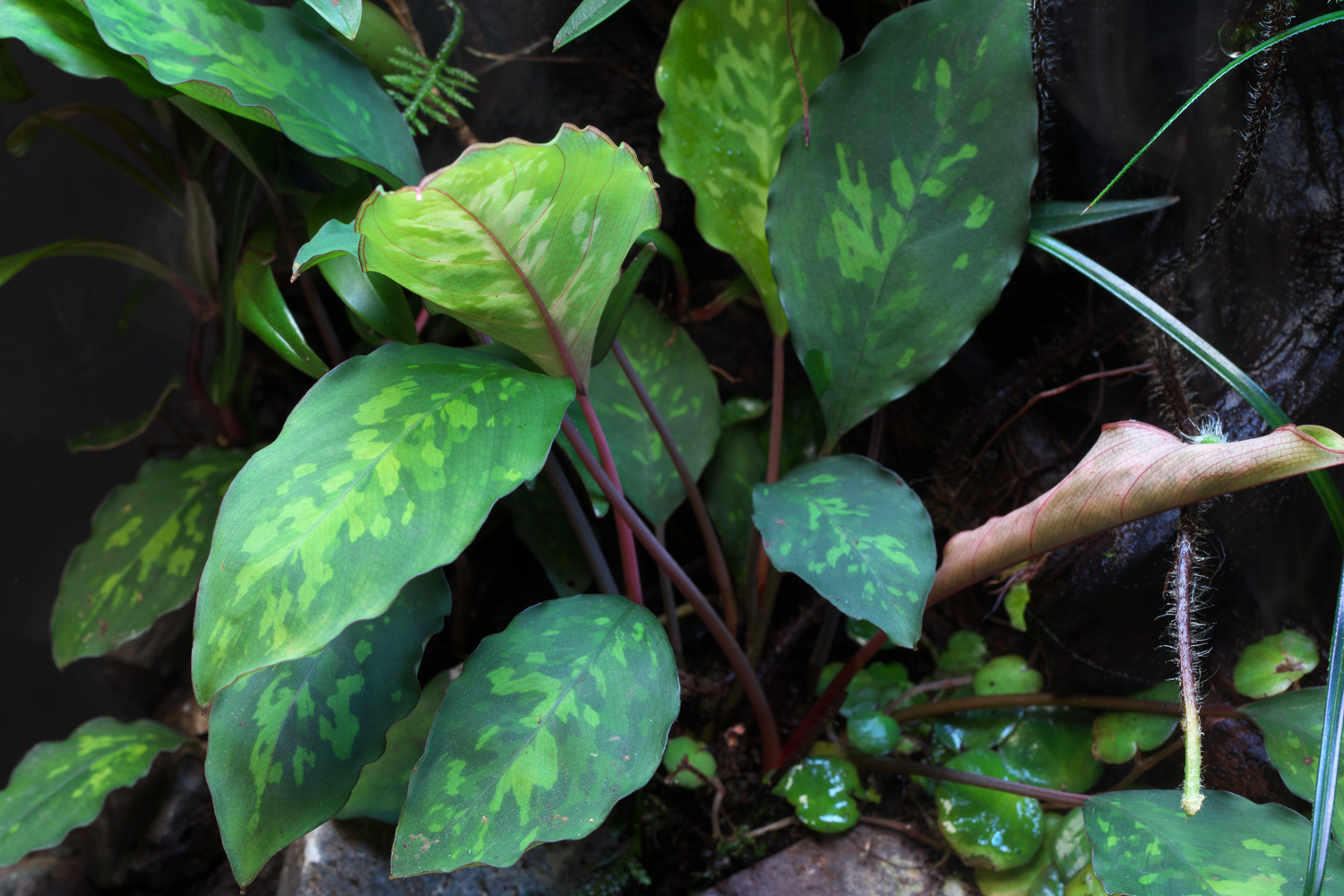
5. Piptospatha cf. ridleyi
I chose species that have unique leaf shapes to express the richness of flora. The camouflage leaves give an impression full of wildness.
I chose species that have unique leaf shapes to express the richness of flora. The camouflage leaves give an impression full of wildness.
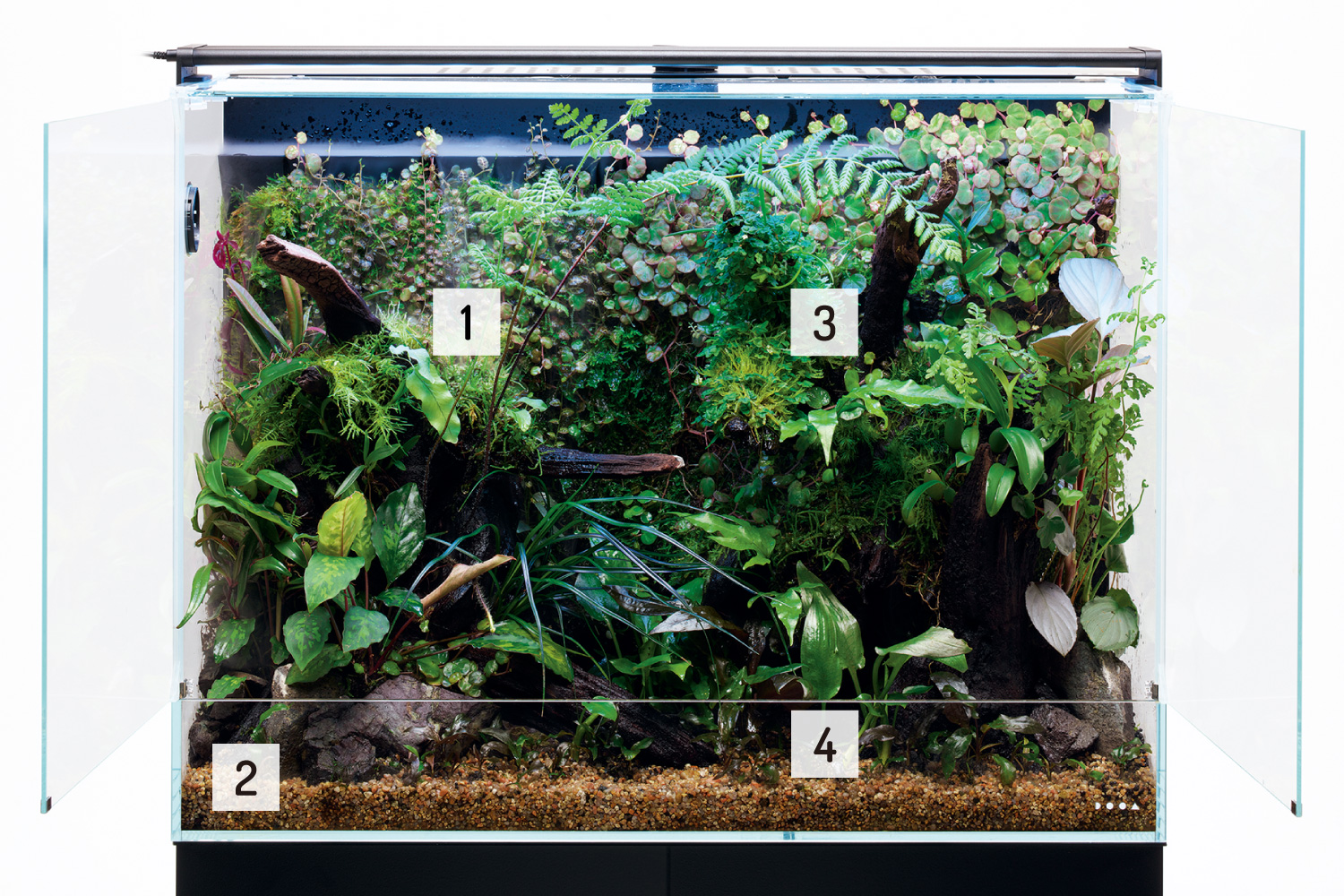
Preparing a growing environment for plants
When enjoying Paludarium, it is necessary to pay attention not to cause the growth of bacteria such as mold or pests as well as to maintain an environment suitable for plants while keeping the humidity in the aquarium tank. I will introduce maintenance methods to keep a well-balanced environment in aquarium.
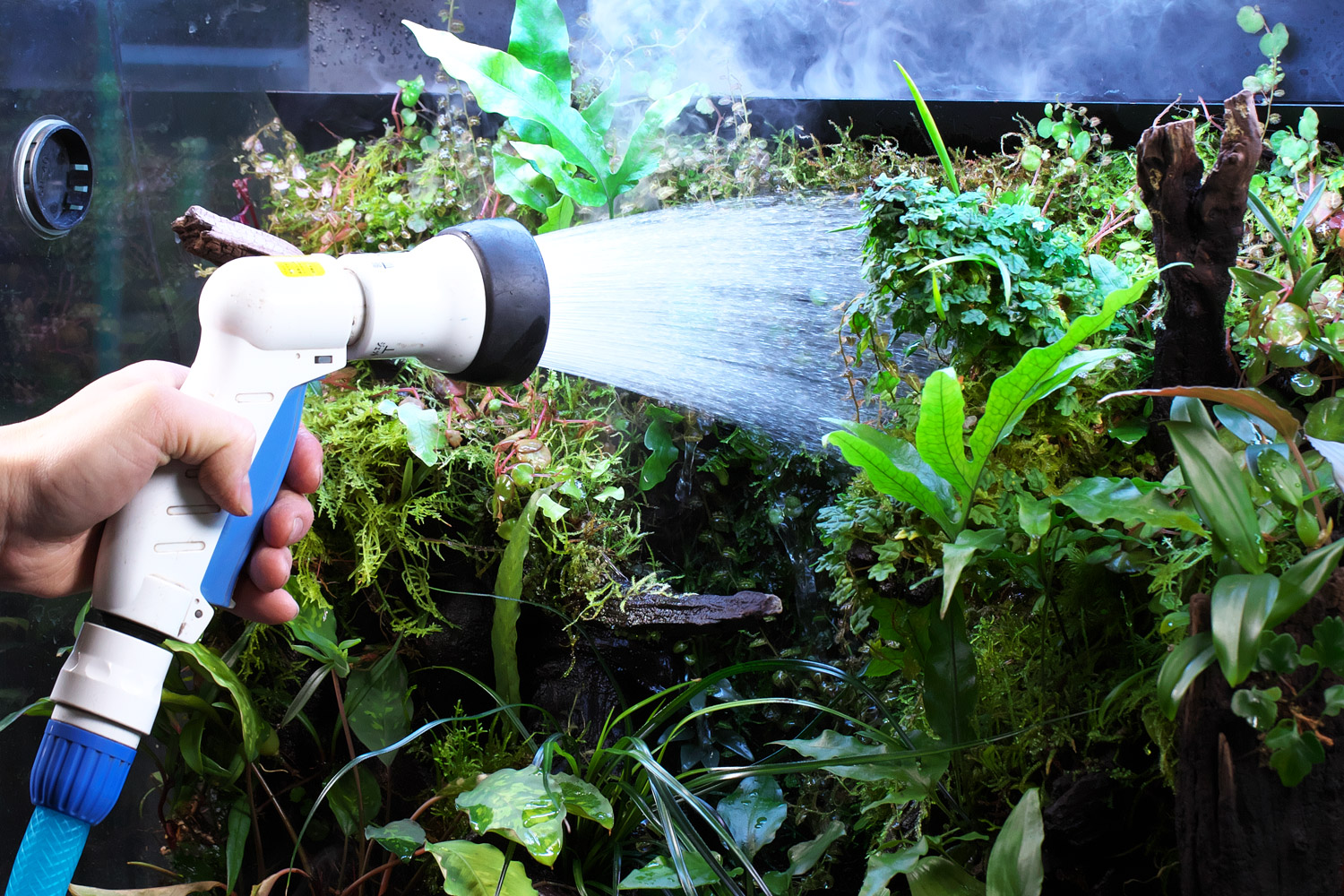
1. Rinsing off dirt
By rising off dirt accumulated on the surface of plant leaves or Wabi-Kusa Mats, what causes the growth of bacteria can be removed. Make sure to wash it with weak water pressure not to damage the plants and layout.
By rising off dirt accumulated on the surface of plant leaves or Wabi-Kusa Mats, what causes the growth of bacteria can be removed. Make sure to wash it with weak water pressure not to damage the plants and layout.
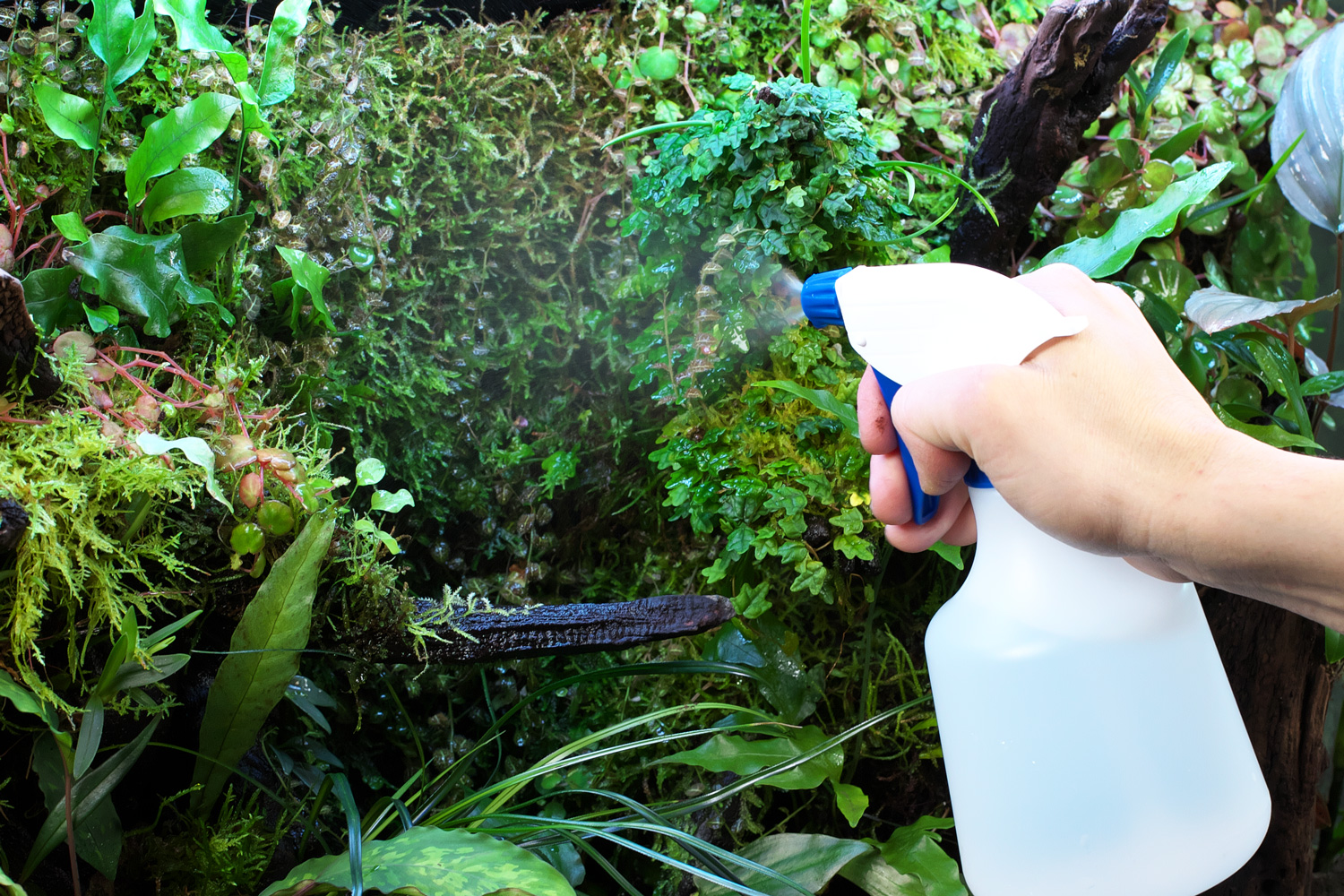
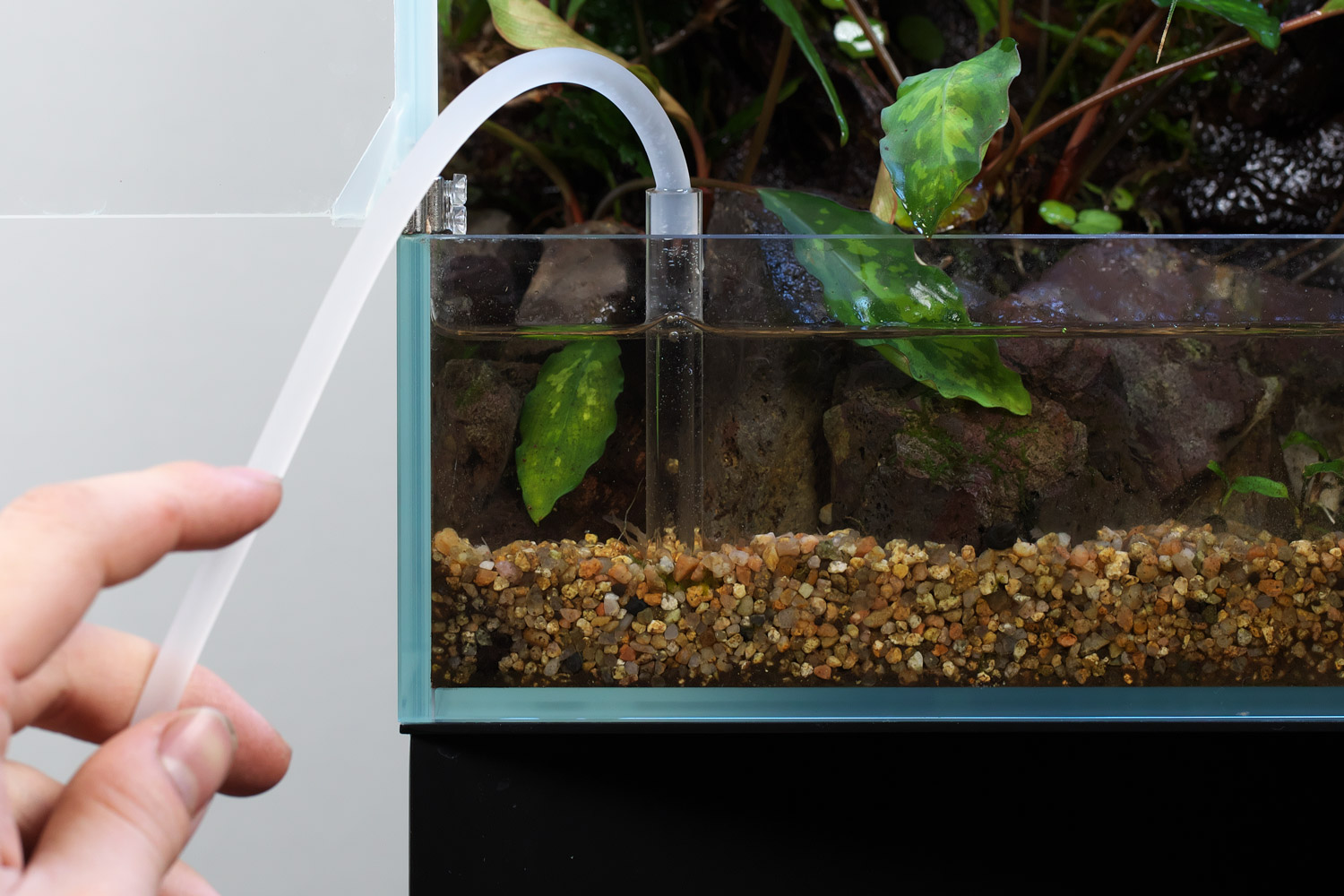
2. Changing water in the substrate
Changing stagnant water in the soil or cosmetic sand helps prevent the substrate from becoming anaerobic. If you rinse off the dirt with the shower at the same time, water change can be effectively performed.
Changing stagnant water in the soil or cosmetic sand helps prevent the substrate from becoming anaerobic. If you rinse off the dirt with the shower at the same time, water change can be effectively performed.
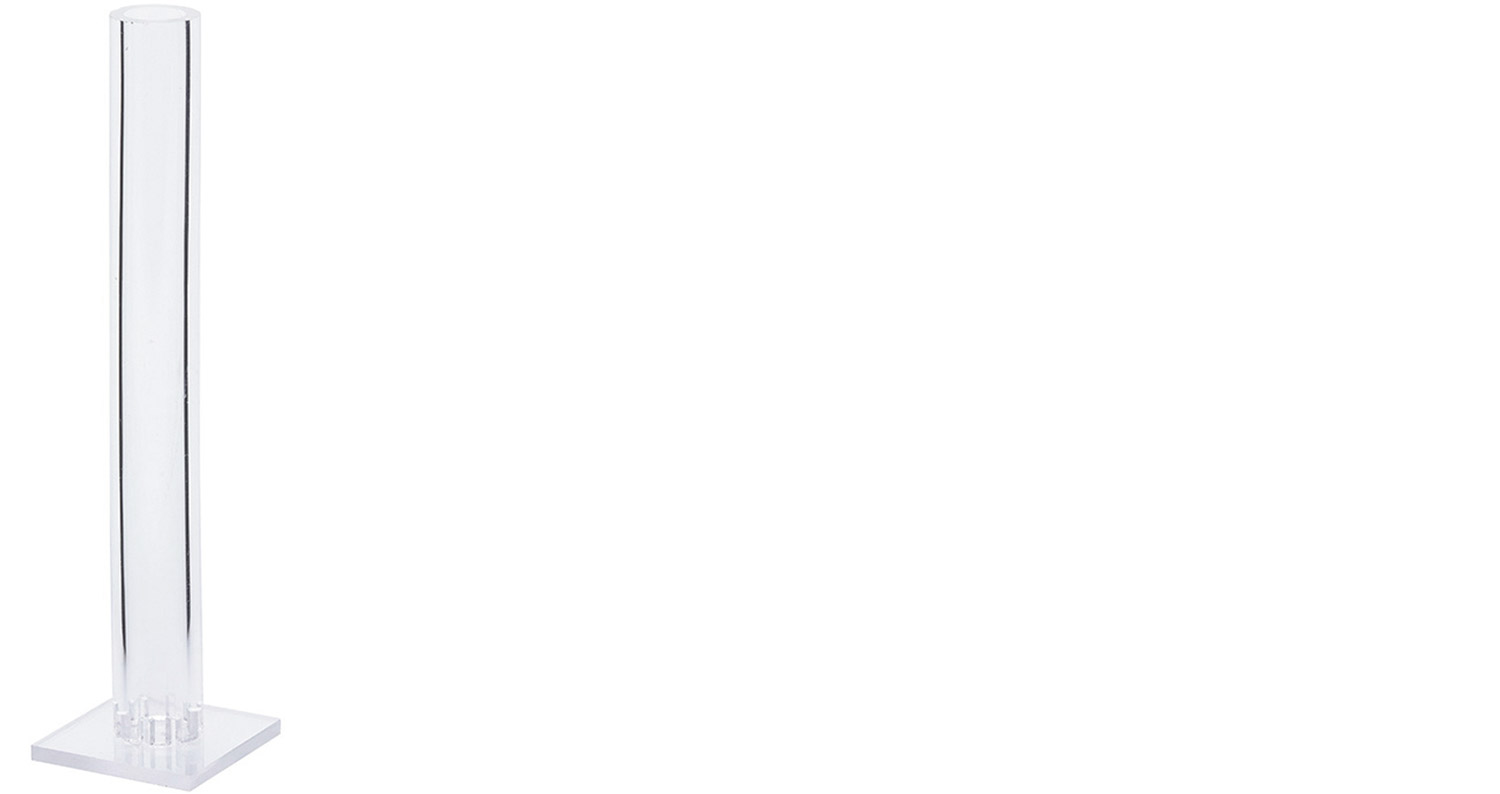
Even the water in the cosmetic sand can be easily drained with Drainage piece.
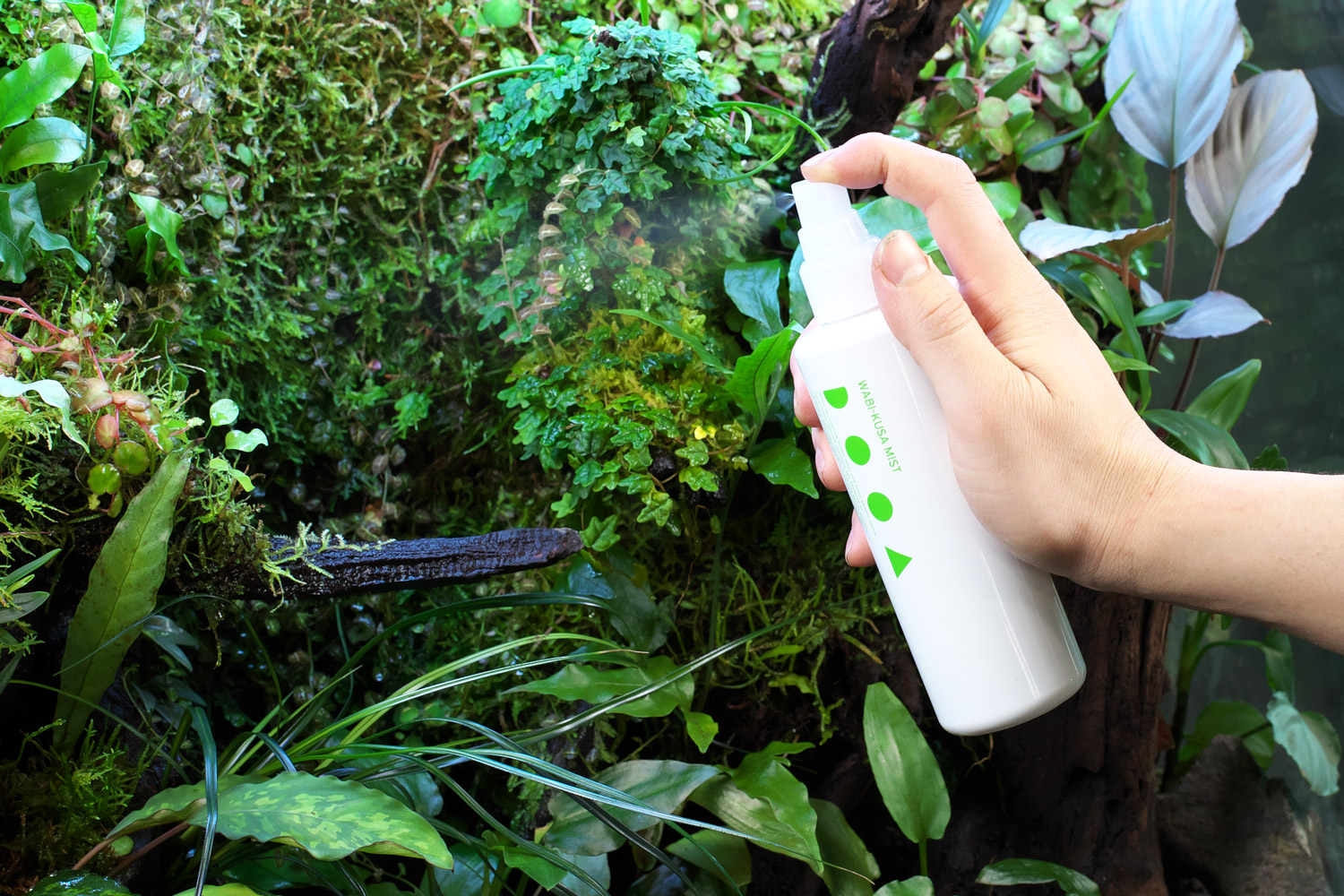
3. Pest prevention with Wabi-Kusa Mist
With the mint component contained in Wabi-Kusa Mist, pest repellent effects can be expected. Moreover, the nutrients of Wabi-Kusa Mist are absorbed from the leaf surface of plants when sprayed, and it also improves the health condition of the plant itself.
With the mint component contained in Wabi-Kusa Mist, pest repellent effects can be expected. Moreover, the nutrients of Wabi-Kusa Mist are absorbed from the leaf surface of plants when sprayed, and it also improves the health condition of the plant itself.

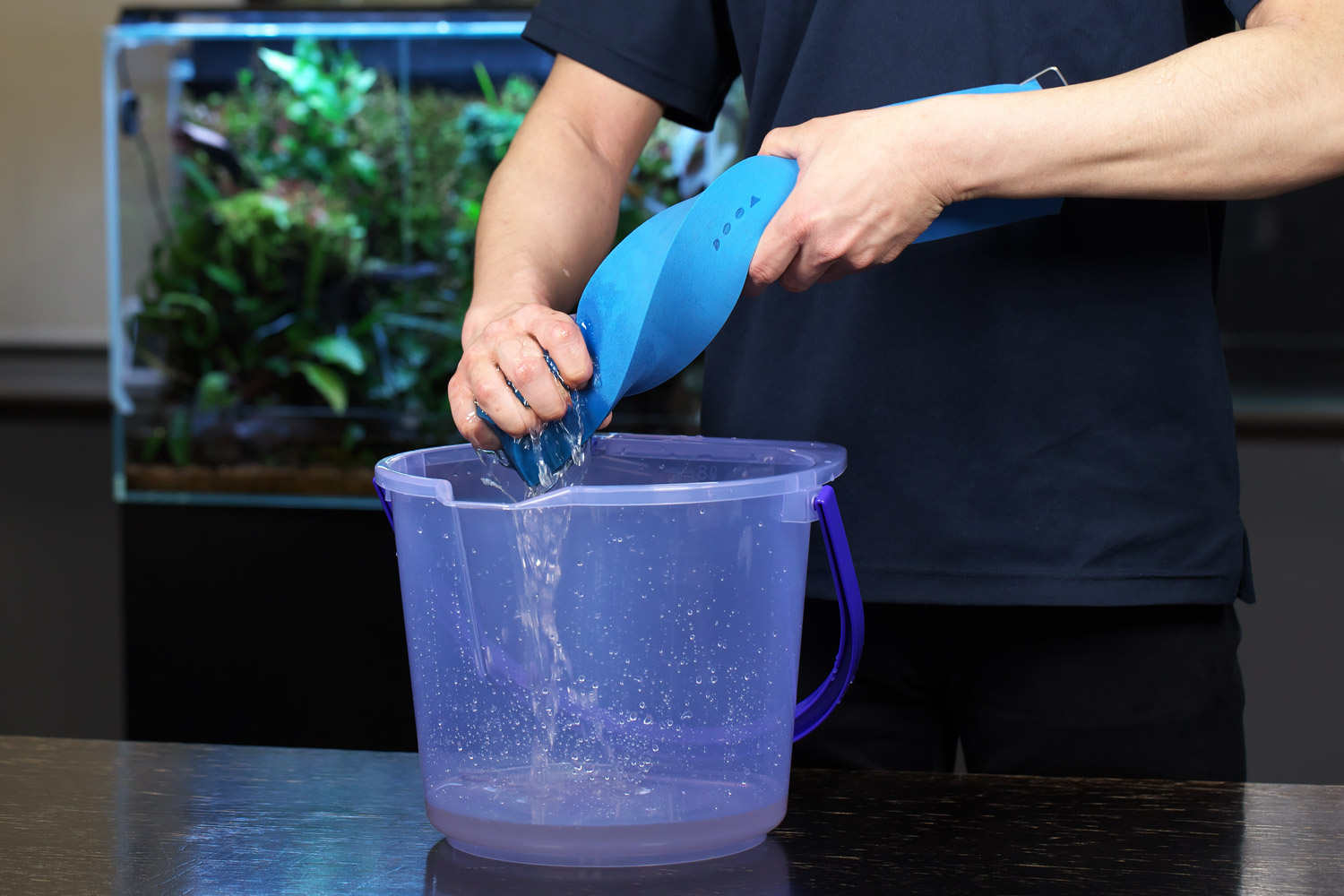
4. Keeping the water level low
When emersed leaves are soaked in the accumulated water for a long time because of the use of Mistflow etc., the soaked leaves will melt. Because it will cause dirty water, excess water should be drained with high absorbent sponges.
When emersed leaves are soaked in the accumulated water for a long time because of the use of Mistflow etc., the soaked leaves will melt. Because it will cause dirty water, excess water should be drained with high absorbent sponges.

